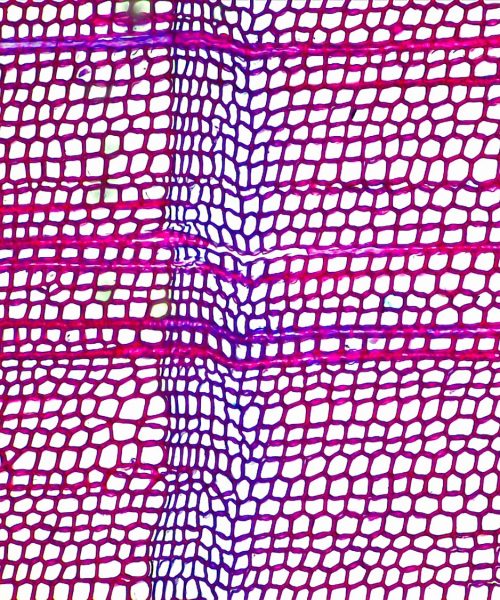Without even thinking about it, the bone marrow in your body is churning out billions of cells every single day. Bone marrow is our body’s strong and silent “blood factory,” working hard in the background while heart pumps and brain controls. The spongy marrow really gets attention during a blood cancer diagnosis or when this crucial system stops working properly.
Understanding how bone marrow produces blood–and how this whole process can fail–is critical to fighting blood cancers and other disorders. However, most bone marrow research relies on non-human animal models and cell cultures in the lab. To address this gap, a team of biomedical researchers built the first realistic model of bone marrow that is engineered entirely from human cells. The new human-cell based bone marrow model is detailed in a study published today in the journal Cell Stem Cell and could lead to more personalized treatments and better cancer therapies and help reduce animal testing.
What is bone marrow?
Bone marrow is the soft and fatty tissue that resembles jelly that fills in the cavities inside of bones. It contains cells that produce red blood cells, white blood cells, and platelets, making billions of new blood cells every single day. The stem cells make the red bone marrow that creates new blood cells and platelets for your blood, while yellow bone marrow is primarily made of fat and the stem cells that create bone and cartilage.
Bone marrow transplants that infuse healthy blood-forming stem cells into the body to replace the marrow that’s not producing enough healthy blood cells are a common treatment for bone marrow diseases. Leukemia–a very common blood and bone marrow cancer–directly targets bone marrow. It forms due to a cell mutation in the bone marrow, with mutated cells multiplying out of control and reducing production of healthy, normal cells. It can affect anyone, but is most common cancer in children and teens. According to St. Jude Children’s Research Hospital, about 3,500 to 4,000 new cases are diagnosed each year in the United States.
Some other blood-related conditions that are often related to abnormally functioning bone marrow include multiple myeloma (the body produces cancerous plasma cells within the bone marrow) and aplastic anemia (bone marrow doesn’t produce enough blood cells).
Recreating bone marrow’s niches
Importantly, bone marrow is not uniform. Not only does it come in red and yellow, but bone marrow is made up of several specialized microenvironments, called niches. One niche called the endosteal niche is important for blood formation and is related to blood cancer’s resistance to treatments. Located near the bone’s surface, the endosteal niche is made up of blood vessels, bone cells, nerves, and immune cells. Earlier human bone marrow models did not include all of these intricate cellular components, while this new model does.
To build this new complex tissue, the team used an artificial bone structure made from hydroxyapatite–a natural component of bones and teeth that makes them hard. They then used human cells reprogrammed into an important group of cells called pluripotent stem cells. These stem cells can be used to create any cell or tissue the body and different specialized cell types depending on the signals that they receive in their environment.
The stem cells were next into the artificial bone structure. To better mimic what is going on in the human body, the team guided the cells to produce the diverse cell types that are produced in real bone marrow.
They found that this three-dimensional model closely resembles the crucial human endosteal niche. At eight millimeters (less than half an inch) in diameter and four millimeters in thickness, it is also larger than previous systems used to study bone marrow. The model can also help researchers sustain human blood formation in the laboratory for weeks.
“We have learned a great deal about how bone marrow works from mouse studies,” Dr. Ivan Martin, a study co-author and biomedical engineer at the University of Basel in Switzerland, said in a statement. “However, our model brings us closer to the biology of the human organism. It could serve as a complement to many animal experiments in the study of blood formation in both healthy and diseased conditions”.
A step towards personalized medicine
In the future, this lab-made system could be used to develop new drugs and therapies to treat blood diseases.
“However, for this specific purpose, the size of our bone marrow model might be too large,” added study co-author Dr. Andrés García García. In order to test multiple compounds and doses at the same, the model would need to be a bit smaller.
It could also be used to develop more personalized treatments for blood cancers, using a model of a patient’s bone marrow and generated from their own cells.






